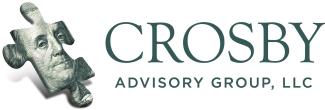
Decision making simplified and paying for life insurance
Simplified Decision-Making Process. Walk yourself through these options this week with every significant challenge you face.
In an upcoming Dynamic Growth Podcast, we simplify the decision-making process to three potential options. In any situation the solution is one of the following:
- Accept the circumstance for what it is.
- Do something about it.
- Leave the situation.
Complaining about a situation does not change it and causes us to give up our ability to react from a position of power. Consider that the air conditioning went out in my car. Complaining about the heat as I drive to work does nothing to alter the situation. In fact, all it does is add a layer of negativity to my commute. I have three choices:
- I can accept that the air conditioning has stopped working and accept hotter drives to work.
- I can pay to have the air conditioner fixed.
- I can sell the car.
All other actions are useless. Think about this the next time you are confronted with a circumstance which seems less than ideal. There are no problems, just circumstances in which we have the power to choose how we react.
How much Life Insurance should I have?
…..and hacks to help pay for it.
If you have dependents, a spouse or a business owner, life insurance is an instrumental tool for self-completing your earning potential. If I have ambitions of building wealth and opportunities for my family, life insurance can guarantee financial freedom and opportunities are realized, even if my life is cut short.
So how much life insurance should I have? The “needs approach” attempts to determine how much life insurance would satisfy the “needs” for which you are purchasing it. Are you looking to pay off a mortgage, fund educational expenses, or provide resources to keep the family business going in your absence? The “needs approach” attempts to determine how much coverage will be needed to satisfy the goals. Consideration should be given to the likely increasing costs of those goals. For example, the cost of education is accelerating much faster than the base inflation rate as measured by the consumer price index. While this method is exponentially better than picking a number out of a hat, there are inherent flaws in that what we think are “needs” today, may not be the same needs in 10 years.
A more holistic approach to life insurance planning uses some percentage of human life value. It is said you can’t put a price on a life. The life insurance industry went and did it :). At least for purely financial impact. For personal insurance protection, I believe it is safer to attempt to replace income rather than meet a specific goal. If we can replace income, then we have many options as to how those benefits are used. I have often heard a 40-year-old who makes $50,000 per year say, “If I have a $500,000 life insurance policy, my spouse is better off with me dead.” Not true of course for many reasons, but financially, if that 40-year-old continued working to an average retirement age of 65 and never got a raise they would contribute $1,250,000 to their family. What our 40-year-old perceived as a windfall, actually robbed his family of wealth and opportunity. Multiplying your annual income by the years until you reach your planned retirement will give you a minimum human life value. While most people do not have their full human life value in life insurance coverage, getting as close to that figure within the budget you have allocated provides greater security for dependents.
Putting the Insurance Company on the Hook
You can actually help pay for life insurance protection through the way you structure your insurance portfolio. While insurance companies have an entire marketing theme designed to get you to carry low deductibles on your car insurance. Many companies even offer disappearing deductible options in which, for an added cost, your deductible will decrease by $100 for every year you don’t have a claim. They are masters at getting policy holders to pay to protect against losses that are not financially devastating. As accumulators of wealth, we want to insure against the large threatening loss, not the inconvenience. Let’s assume a family that possesses three cars is looking for a way to help pay for life insurance to protect their family. By raising the deductibles on their auto insurance from $250 to $1,000 they save an average of $120 per vehicle. Raising their homeowner's deductible from $1,000 to $2,500 saves an additional $150. By doing so this family is now responsible for more initial loss if a claim were to occur, but that should easily be absorbable by our emergency fund that is part of our investment plan. However, the savings is enough to pay for a $1,000,000 20-year level term or a preferred 40-year-old, putting the insurance company on the hook for more risk against the financially threatening loss, which it is positioned to assume.
Not Needed to Never Taxed
We have clients who are over 72 and required to take distributions from their IRAs even though they do not need the withdrawal to pay for their current lifestyle. For these clients who are in relatively good health, one option they have to grow money without being taxed is an indexed universal life policy. Using the RMD to pay for the policy automatically leverages the tax-free death benefit and allows the money to grow tax deferred. Our single premium index UL policies have returns of 2.5 to 8.9%. Did I say tax free?
Disclaimer: This newsletter is for informational purposes only and represents the opinions of Crosby Advisory Group, LLC. Investing involves risk including potential loss of principal. Not all investments are suitable for all investors. Crosby Advisory Group and Nate Crosby have ownership interest in CAG Marketing and NMD Insurance.
Follow us on Social Media
Facebook: Crosby Advisory Facebook Instagram: Crosby Advisory Instagram YouTube: Crosby Advisory YouTube

